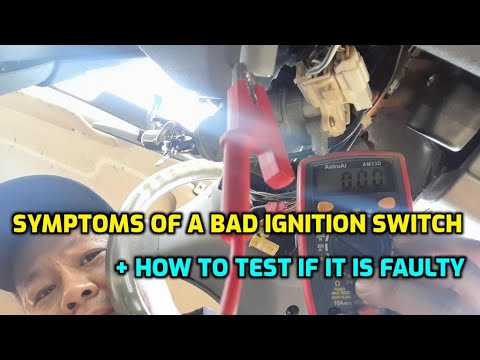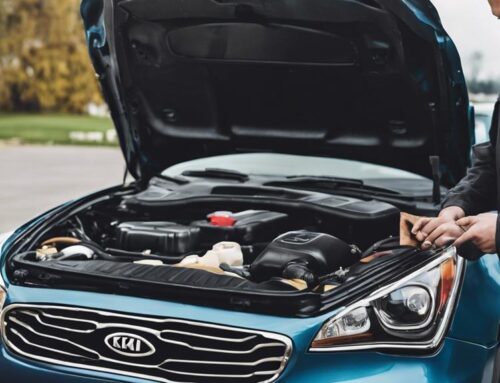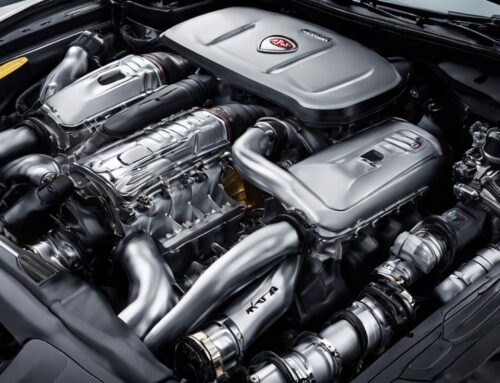Fixing your Highlander's ignition issues involves several steps. Start by identifying common problems like a stuck steering wheel lock or a faulty ignition switch. Gather essential tools, such as a key extractor, ignition lock cylinder removal tool, and a diagnostic tool for vehicle systems. For specific issues, focus on fixing the steering wheel lock, replacing the ignition switch, and checking the brake pedal position sensor. Consider reprogramming ignition keys with a Toyota scan tool for flawless recognition. Don't forget regular maintenance to keep everything running smoothly. In the sections ahead, you'll find detailed steps and tips for each task.
Key Takeaways
- Identify Common Ignition Problems: Diagnose steering wheel lock, faulty ignition switch, brake pedal sensor, and shift interlock issues.
- Essential Tools and Materials: Gather diagnostic tools, key extractor, ignition lock cylinder removal tool, and new ignition cylinder assembly.
- Steering Wheel Lock Fix: Slightly turn the wheel while applying key pressure to resolve common ignition issues.
- Ignition Switch Replacement Process: Use socket set, screwdrivers, and trim removal tool; follow repair manual instructions for replacement.
- Preventative Maintenance Tips: Regular lubrication, avoid excessive key force, and keep spare keys to prevent ignition issues.
Common Ignition Problems
You'll often encounter common ignition problems in Highlanders, such as a steering wheel lock preventing the key from turning. This issue typically arises when the steering wheel is moved after the engine's been turned off, causing the lock to engage. To fix this, gently jiggle the steering wheel while turning the key. It's a simple maneuver that can guarantee you a lot of frustration.
Another common problem is a faulty or worn-out ignition switch. Over time, the switch can degrade, making it difficult or impossible to start the vehicle. Replacing the ignition switch can restore functionality and make sure your Highlander starts smoothly.
You might also face issues with a malfunctioning brake pedal position sensor. This sensor communicates with the ignition system, and if it's not working correctly, it can prevent the engine from starting. Inspecting and potentially replacing this sensor can resolve the issue.
A stuck transmission shift interlock mechanism is another culprit. If this mechanism gets jammed, it can prevent the key from turning in the ignition. Ensuring this mechanism is free and operational can help avoid such problems.
Lastly, don't overlook electrical issues like a dead battery. A simple battery check and replacement can often solve ignition troubles.
Tools and Materials Needed
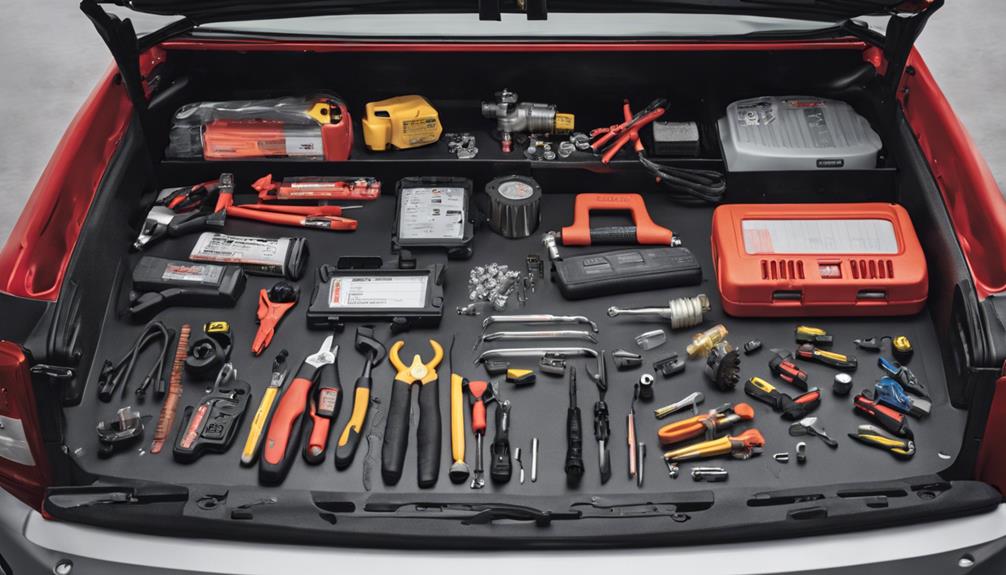
To tackle Highlander ignition repair, gather essential tools like a screwdriver, pliers, and a socket wrench set. These basics will help you get started, but don't forget a trim removal tool for accessing components without damaging the interior. If you need to replace the ignition cylinder, specialized tools become vital.
Here's a list of specialized tools and materials you might need:
- Key Extractor Tool – Useful if a broken key is stuck in the ignition.
- Ignition Lock Cylinder Removal Tool – Makes removing the old ignition cylinder straightforward.
- New Ignition Cylinder Assembly – Make sure it is compatible with your Highlander model.
- Diagnostic Tool for Vehicle Systems – Helps identify any electrical or immobilizer issues.
Additionally, you'll need materials like a new ignition cylinder, replacement keys, lubricant for smooth operation, and a cleaning solution for the key and ignition assembly. Don't skip safety gear—gloves and eye protection are essential to prevent injuries while working on the ignition system.
Having the right tools and materials on hand puts you in control and ensures you're prepared for every step. Now, let's move forward with confidence, knowing you have what you need to get the job done right.
Diagnosing Ignition Issues
When diagnosing ignition issues in your Highlander, you should start by identifying common problems like a faulty ignition switch or a worn-out key cylinder. You'll need basic diagnostic tools such as a spare key, battery tester, and some lubricant. These tools will help you pinpoint whether the issue lies with the key, the cylinder, or another component.
Common Ignition Problems
Identifying common ignition problems in your Toyota Highlander can save you from future headaches and costly repairs. Knowing what to look for will help you act quickly and maintain control over your vehicle's performance. Here are some ignition issues you might encounter:
- Steering Wheel Lock: If your steering wheel is locked, you won't be able to turn the key. This often happens if you turn off the engine and move the steering wheel simultaneously.
- Faulty Ignition Switch: A failing ignition switch can prevent your car from starting. Symptoms include flickering dashboard lights or difficulty turning the key.
- Malfunctioning Brake Pedal Position Sensor: If the sensor isn't working properly, it may not recognize when you press the brake pedal, which can prevent the engine from starting.
- Stuck Transmission Shift Interlock: If the shift interlock is stuck, you may not be able to move the gear selector out of park, affecting the ignition.
Regular maintenance is essential to prevent these problems. Don't ignore any signs of trouble; addressing them promptly can save you from expensive repairs down the line. If you experience persistent issues, seek professional help for accurate diagnosis and effective repair.
Diagnostic Tools Needed
Having identified common ignition problems in your Toyota Highlander, you now need the right diagnostic tools to pinpoint the root cause accurately. Start with a scan tool. This essential device retrieves trouble codes from your vehicle's computer, giving you a clear direction for further investigation. Without it, you might end up guessing, which wastes time and effort.
Next, you'll need a multimeter. This versatile tool checks voltage levels and continuity in your ignition system. It's indispensable for verifying that electrical components are functioning correctly. With a multimeter, you can quickly determine if a battery, ignition switch, or wiring is faulty.
Don't forget a spark tester. This tool helps you verify the functionality of the spark plugs and ignition coils. By using a spark tester, you can see if your spark plugs are firing correctly and confirm that your ignition coils are delivering the necessary voltage.
Using these tools, you can diagnose ignition issues accurately and efficiently. Proper diagnostic tools streamline the troubleshooting process, leading to timely and effective repairs. Equip yourself with these tools, and you'll have complete control over identifying and fixing ignition problems in your Highlander.
Steering Wheel Lock Fix
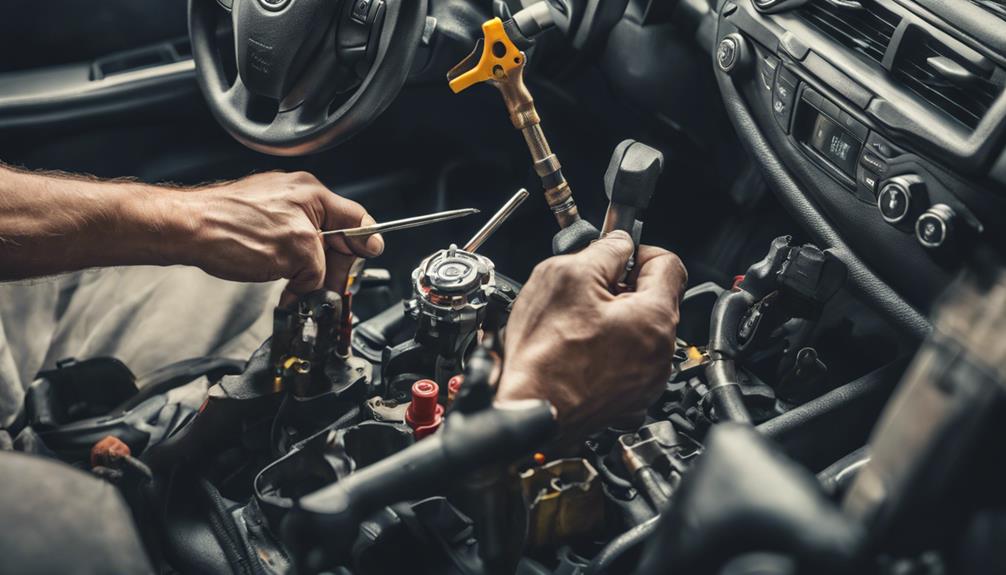
To fix a steering wheel lock on your Toyota Highlander, start by turning the wheel slightly while you gently apply pressure to the key. This simple maneuver can often release the lock and allow you to start the engine. The steering wheel lock is a common cause of ignition problems, but you can tackle it with confidence by following these steps:
- Turn the Wheel: With the key in the ignition, try turning the steering wheel slightly to the left or right. This motion helps align the locking mechanism.
- Apply Key Pressure: While turning the wheel, apply gentle pressure to the key without forcing it. This can help the key engage properly and release the lock.
- Check Manual Disengagement: If the lock doesn't release, you might need to manually disengage the steering wheel lock. Refer to your vehicle's manual for specific instructions.
- Inspect for Damage: If these steps don't work, inspect the ignition and steering components for damage or wear, as these could be underlying causes.
Replacing Ignition Switch
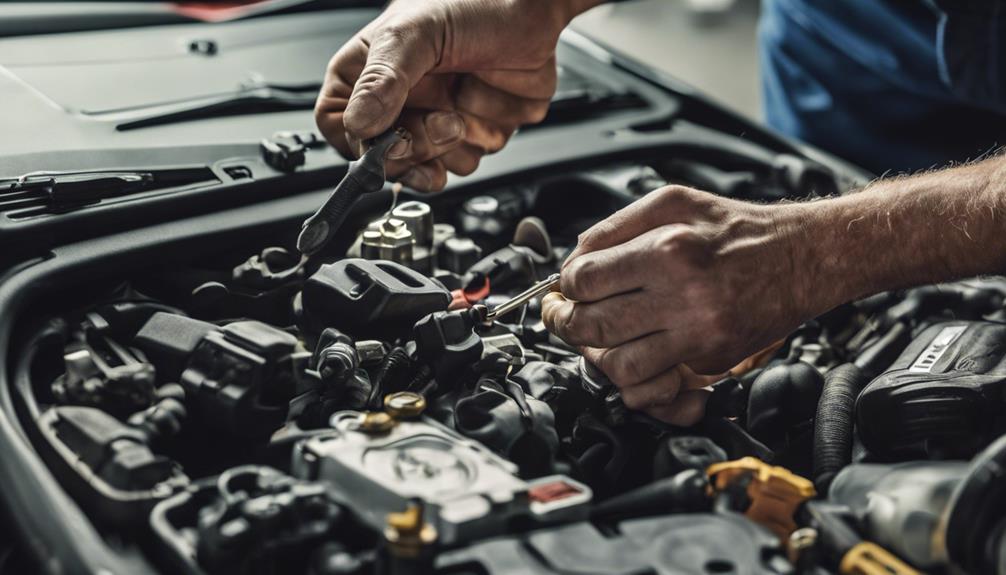
To replace your Highlander's ignition switch, you'll need specific tools and materials to get started. First, gather everything you'll need, including a repair manual for guidance. Then, follow the step-by-step instructions to guarantee a smooth and safe replacement process.
Tools and Materials Needed
For replacing the ignition switch in your Toyota Highlander, you'll need a socket set, screwdrivers, wire cutters/strippers, and a trim removal tool. These tools are essential to make sure you can dismantle and reassemble components smoothly. To achieve the best results, having the right materials on hand is just as vital.
Here's a detailed list of what you'll need:
- Socket set: A variety of socket sizes will help you tackle different bolts and screws.
- Screwdrivers: Both Phillips and flathead screwdrivers are necessary for removing various screws.
- Wire cutters/strippers: These are important for handling any electrical components safely.
- Trim removal tool: This specialized tool helps you remove interior panels without damaging them.
In addition to these tools, you should have a new ignition switch, electrical tape, and anti-seize lubricant. The new ignition switch is obviously the star of this process, while electrical tape helps secure any wiring, and anti-seize lubricant ensures that bolts and screws don't get stuck in the future. Being prepared with these tools and materials will give you the control you need for a successful ignition switch replacement, setting you up for a smooth repair process.
Step-by-Step Instructions
Now that you have all the necessary tools and materials, start by disconnecting the negative battery terminal to guarantee safety during the repair process. This step guarantees there's no accidental electrical discharge while you're working.
Next, remove the steering column covers. These are typically held in place by screws or clips, so a screwdriver or a trim tool will come in handy. With the covers removed, locate the ignition switch assembly, which is usually positioned near the steering wheel.
Carefully disconnect the electrical connectors attached to the ignition switch. These connectors supply power to the switch, so handle them with care. After disconnecting the connectors, remove the mounting bolts securing the ignition switch in place. Once the bolts are out, you can easily take out the old switch from the assembly.
Now, install the new ignition switch into the same spot. Reconnect the electrical connectors to the new switch and secure it with the mounting bolts. Make sure everything is snug and properly aligned. Finally, reassemble the steering column covers.
Reconnect the negative battery terminal and test the new ignition switch to make sure it's working correctly. Enjoy the restored functionality in your Toyota Highlander's ignition system.
Brake Pedal Position Sensor
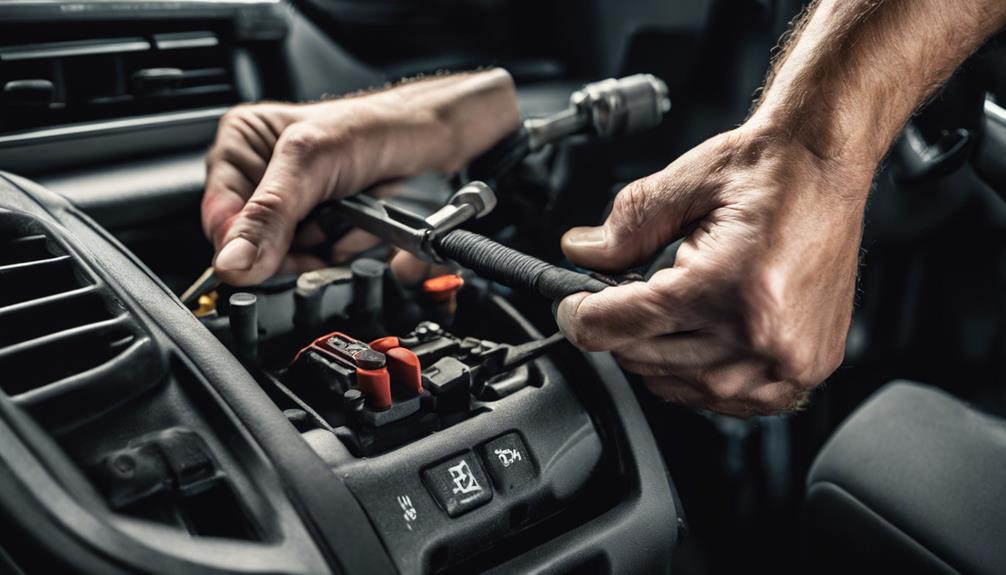
The brake pedal position sensor in your Toyota Highlander plays a pivotal role in detecting the position of the brake pedal and ensuring smooth vehicle operation. This small but significant component communicates with your vehicle's computer system to help with various functions like starting the engine and shifting gears. If the sensor malfunctions, you might face significant issues.
Here's why the brake pedal position sensor is essential:
- Engine Start: The sensor ensures the brake pedal is pressed when you start the engine, acting as a safety feature.
- Transmission Engagement: It confirms the pedal position to allow smooth shifting of gears.
- Dashboard Warnings: A faulty sensor can trigger warning lights, alerting you to potential issues.
- Vehicle Safety: Ensuring the brake pedal position sensor works correctly is crucial for the overall safety of your Highlander.
If you notice problems like difficulty starting your vehicle or dashboard warnings, the brake pedal position sensor could be the culprit. Diagnosing and replacing a faulty sensor promptly is significant for maintaining your vehicle's reliability and safety. By understanding its role, you can take charge of your Highlander's health, ensuring a smooth and safe driving experience.
Transmission Shift Interlock
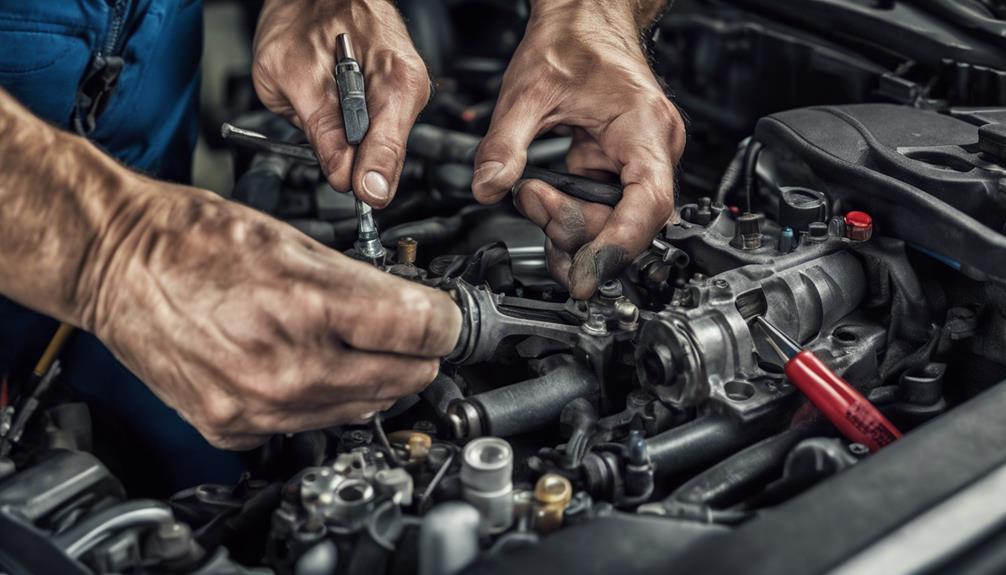
A well-functioning transmission shift interlock guarantees you can't accidentally shift out of Park without pressing the brake pedal, enhancing your Highlander's safety. This crucial safety feature also ensures the key can't be removed unless your vehicle is securely in Park. However, if the interlock system becomes stuck, it can prevent the key from turning or being removed, creating a frustrating scenario.
To maintain control, it's important to understand the common causes behind these issues: a faulty solenoid, problematic wiring, or a malfunctioning shift lever. Start by inspecting the electrical connections—loose or corroded wires can disrupt the system's functionality. Next, check the solenoid operation. A defective solenoid won't allow the shift lever to move freely, leading to interlock problems.
If everything seems intact, the shift lever mechanism might be the culprit. Over time, it can wear out or get debris lodged in it, causing it to jam. Regular maintenance and prompt attention to any unusual behavior can prevent these issues from escalating.
Reprogramming Ignition Keys
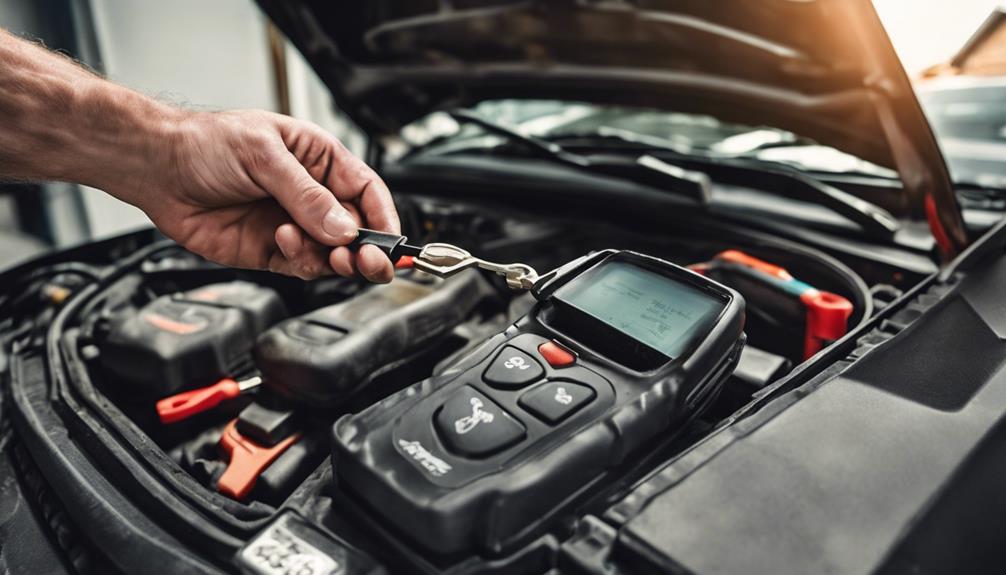
To successfully reprogram ignition keys for your Highlander, you'll need a Toyota scan tool to guarantee proper recognition by the ECM. This device ensures that the new transponder key is correctly identified by your vehicle's electronic control module, which is vital for preventing unauthorized access.
Follow these steps to reprogram your ignition keys:
- Obtain a Toyota scan tool: This is essential. Without it, proper reprogramming is impossible.
- Have your new transponder key ready: Ensure it's a genuine Toyota key to avoid compatibility issues.
- Access the vehicle's ECM: Use the scan tool to interface with your Highlander's electronic control module.
- Complete the dealer programming: This step is necessary for the new key to be recognized by your vehicle. Skipping this will render your efforts ineffective.
Using the immobilizer from the same vehicle as the keys can make the reprogramming process smoother. Attempting to replace the immobilizer without proper dealer programming won't work, as it's designed to prevent unauthorized access and theft. By following these steps, you'll maintain control over your vehicle's security and functionality, ensuring your Highlander operates smoothly and securely.
Preventative Maintenance Tips
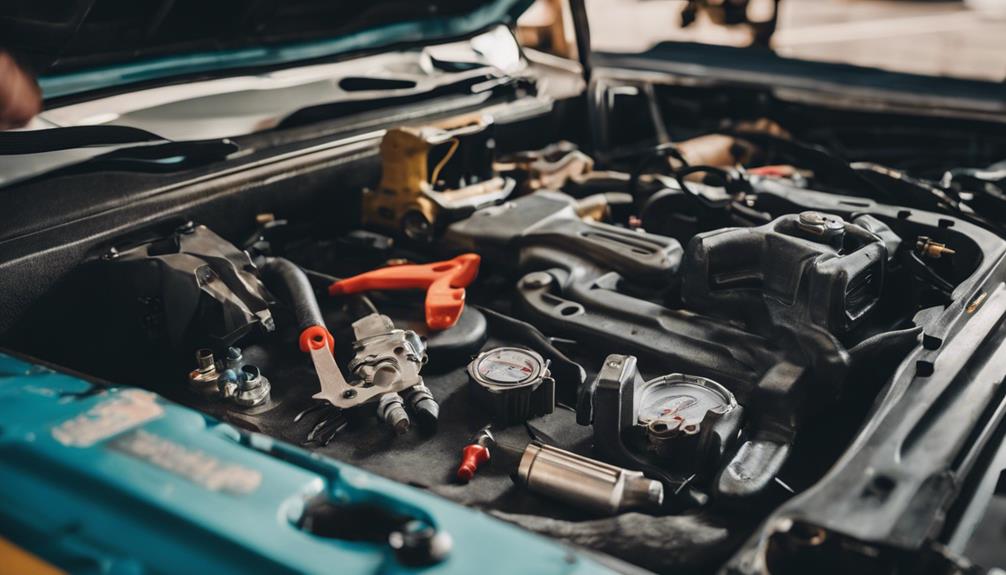
Regularly lubricating your key and ignition cylinder can prevent wear and guarantee smooth operation. It's a simple task that can save you from costly repairs down the line. Make sure you use a lubricant specifically designed for ignition systems. Just a small amount applied to the key can guarantee it slides in and out smoothly, reducing unnecessary friction and wear.
When turning the key, avoid using excessive force. If the key doesn't turn easily, forcing it can damage the ignition components. Take a moment to check if the steering wheel is locked or if the gear shifter isn't in the correct position. These are common issues that can be fixed without brute force.
Always keep spare keys in a secure location. Losing your key can be a major inconvenience, but having a spare can prevent you from being locked out of your vehicle.
Address any ignition issues promptly. Ignoring small problems can lead to more significant damage and expensive repairs. If you notice anything unusual, get it checked out right away.
Frequently Asked Questions
How Much Does Highlander Ignition Repair Typically Cost?
Typically, Highlander ignition repair costs range from $150 to $400, depending on the damage and necessary repairs. The model year and labor rates of the mechanic can also impact the price. If you're handy, consider a DIY kit for $25 to $50 for minor fixes. However, professional assistance guarantees accurate diagnosis and repair, potentially saving you time and future expenses. It's your call on how to proceed.
Can I Drive My Highlander With Ignition Issues?
No, you shouldn't drive your Highlander with ignition issues. Doing so can lead to unexpected stalling or failure to start, putting your safety at risk. Ignition problems might cause a sudden loss of power, potentially damaging the engine or electrical system. Addressing these issues promptly prevents bigger headaches and costly repairs. Always consult a professional mechanic to assess and fix the problem before hitting the road.
How Long Does It Take to Repair a Highlander Ignition?
Imagine your Highlander's ignition failing on a busy morning. You'd want a quick fix, right? Typically, repairing a Highlander ignition takes 1-3 hours. If it's a simple key cylinder replacement, a pro might wrap it up in an hour. Complex issues, like ECM reprogramming, can take longer. Always consult a certified mechanic to get a precise estimate and plan your day accordingly. You're in control.
Are Aftermarket Ignition Parts Reliable for Highlanders?
Yes, aftermarket ignition parts can be reliable for Highlanders if you source them from reputable manufacturers. You'll find quality aftermarket parts that offer cost-effective alternatives to OEM components. Just make sure they're compatible with your specific Highlander model before purchasing. Look for parts with good reviews and warranties to guarantee reliability and performance. Consulting with a trusted mechanic or specialist can also help you make informed decisions.
What Are the Signs of a Failing Ignition in a Highlander?
Imagine your Highlander struggling like a tired horse. You'll notice the ignition failing when turning the key feels like wrestling, the engine stalls or misfires, and the check engine light illuminates like a warning beacon. Starting issues, power loss to accessories, and a no-start condition can follow. Addressing these signs promptly avoids bigger headaches and guarantees you keep control over your vehicle's performance.



